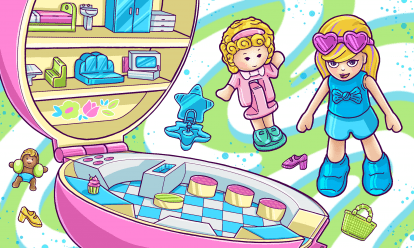
September 1, 2024
How ’90s Polly Pocket Became a Toy Sensation
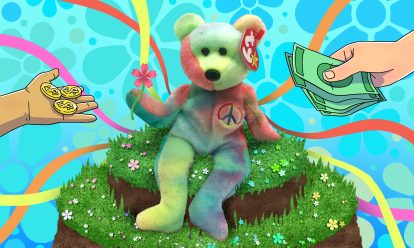
March 27, 2025
How Much is Peace the Bear Worth? 2025 Value and History
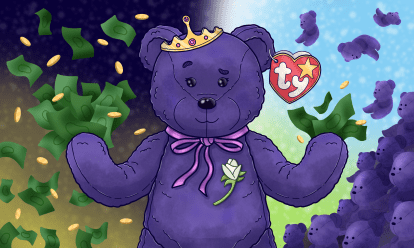
March 4, 2025
Real Princess Diana Beanie Baby Value 2025
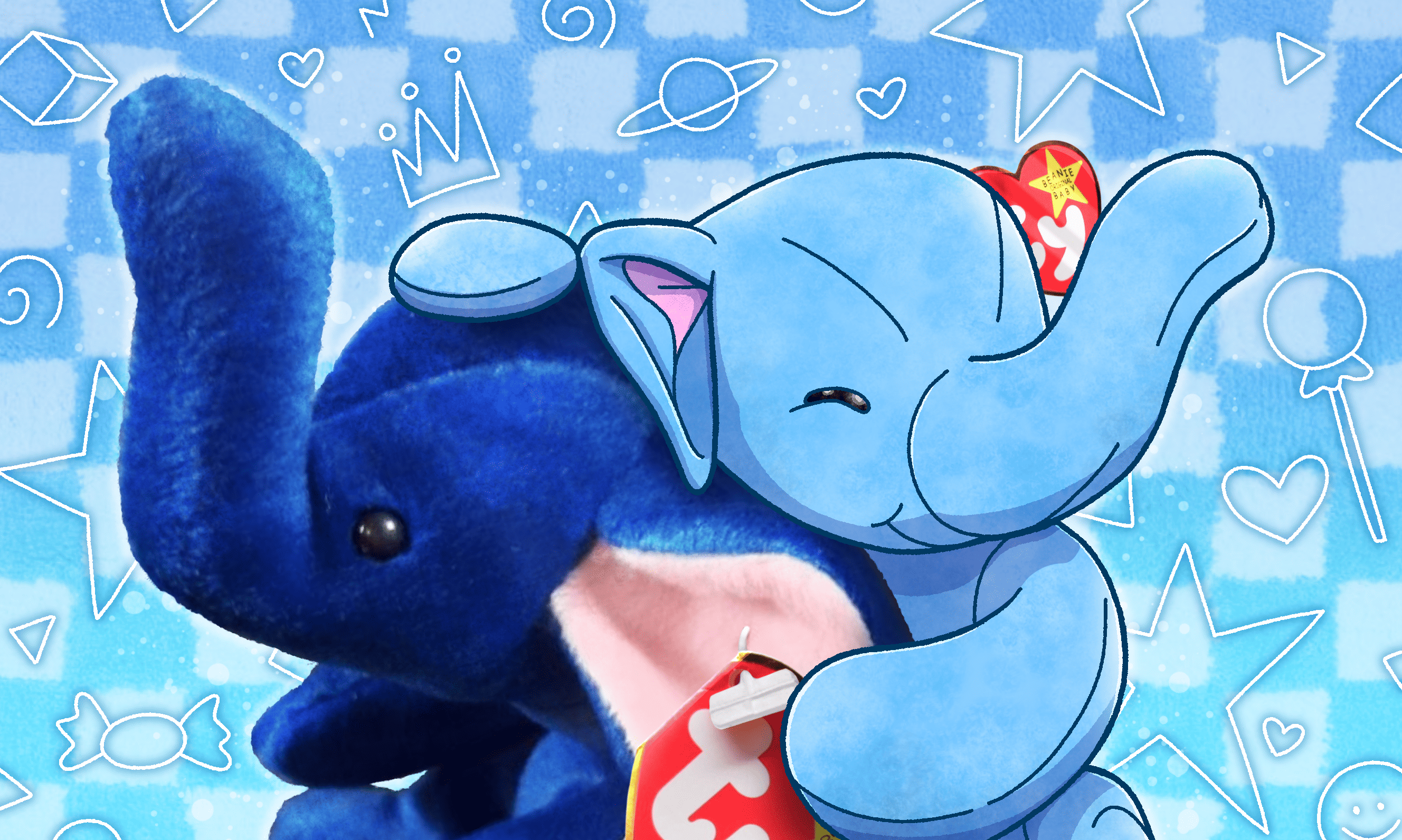
Out of the hundreds of different Ty Beanie Babies that have been released since 1993, the legacy of Peanut the Elephant might just be the most important for Ty Inc. The adorable plush was launched at a time when sales of Beanie Babies were at an all-time low, and some shrewd business decisions centered on Peanut catapulted the brand back to the top, effectively igniting the craze we all remember from the mid-90s. It’s been a long time since then, so how does Peanut the Elephant hold up today, over 27 years later? That’s exactly what we’re here to find out! Today, we have all of the most current info and valuations of Peanut across its many variants to share with you.
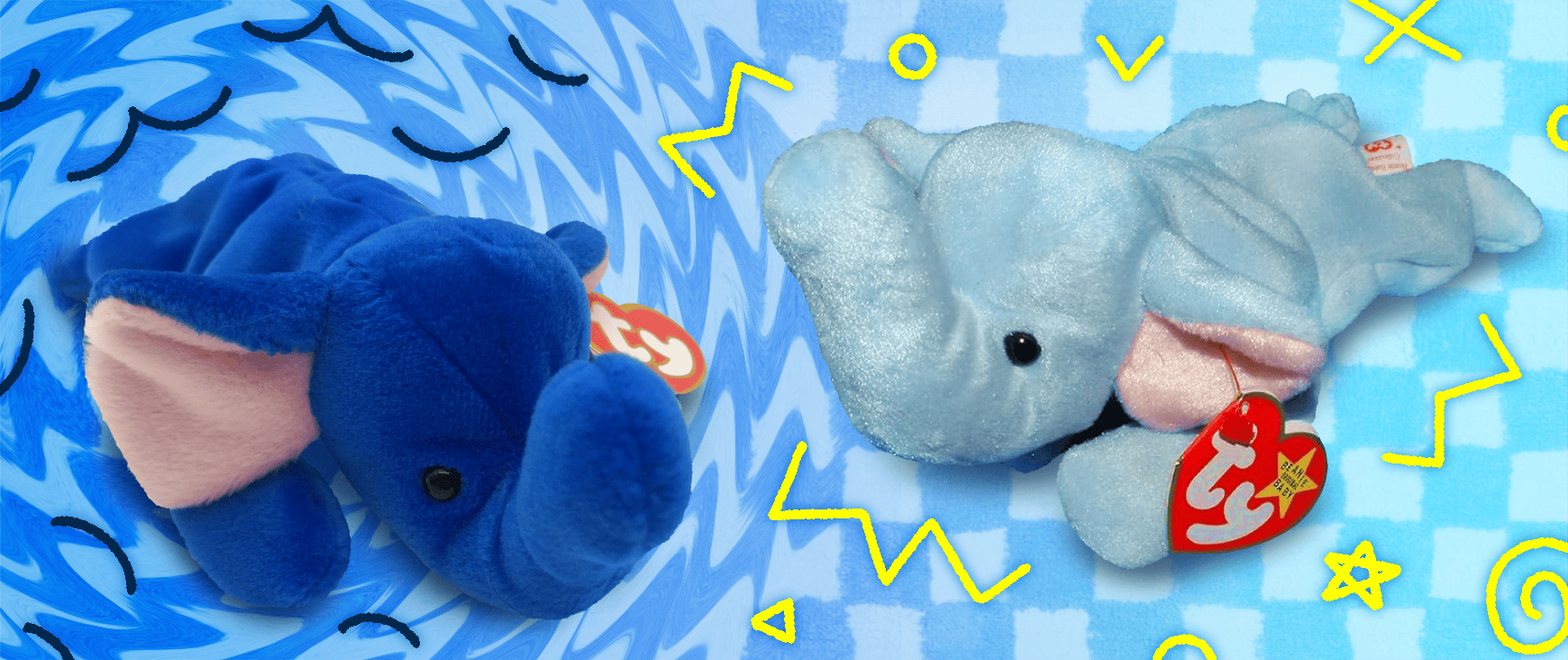
Peanut the Elephant was presented to the world in all of her luxurious Royal Blue glory on June 3rd, 1995. By this time, Ty Beanie Babies had been around for a year and a half, and things were not looking good. Sales were way down, and stores were requesting half their usual stock or none at all!
While employees and high-level staff at Ty Inc. began to worry, Ty himself was calm. Serene, even. He knew he had an ace up his sleeve, and he was just waiting for the perfect time to play it.
That perfect time arrived on October 2nd, 1995. This was the day that the first version of Peanut, the Royal Blue one, was quickly retired. In its place was the new and “improved” Peanut, which came in a Light Blue colorway. It is estimated that only a few thousand Royal Blue Peanuts were produced before it was discontinued, making it extremely rare in comparison to the other mass-produced Beanies.
The rarity of that version of Peanut and the associated skyrocketing value made people froth at the mouth! Everyone from soccer moms to TV stars began scooping up Beanie Babies, and this cute stuffed elephant started it all. (Source: BuzzFeed)
It’s all thanks to Peanut.

Fact

Some people think that the original Royal Blue Peanut the Elephant was discontinued because of a manufacturing error. Allegedly, the color was too dark, and that’s why the Light Blue Peanut the Elephant came about. There’s nothing to support this claim though, and we like to think that it was all a calculated ruse by Ty himself!
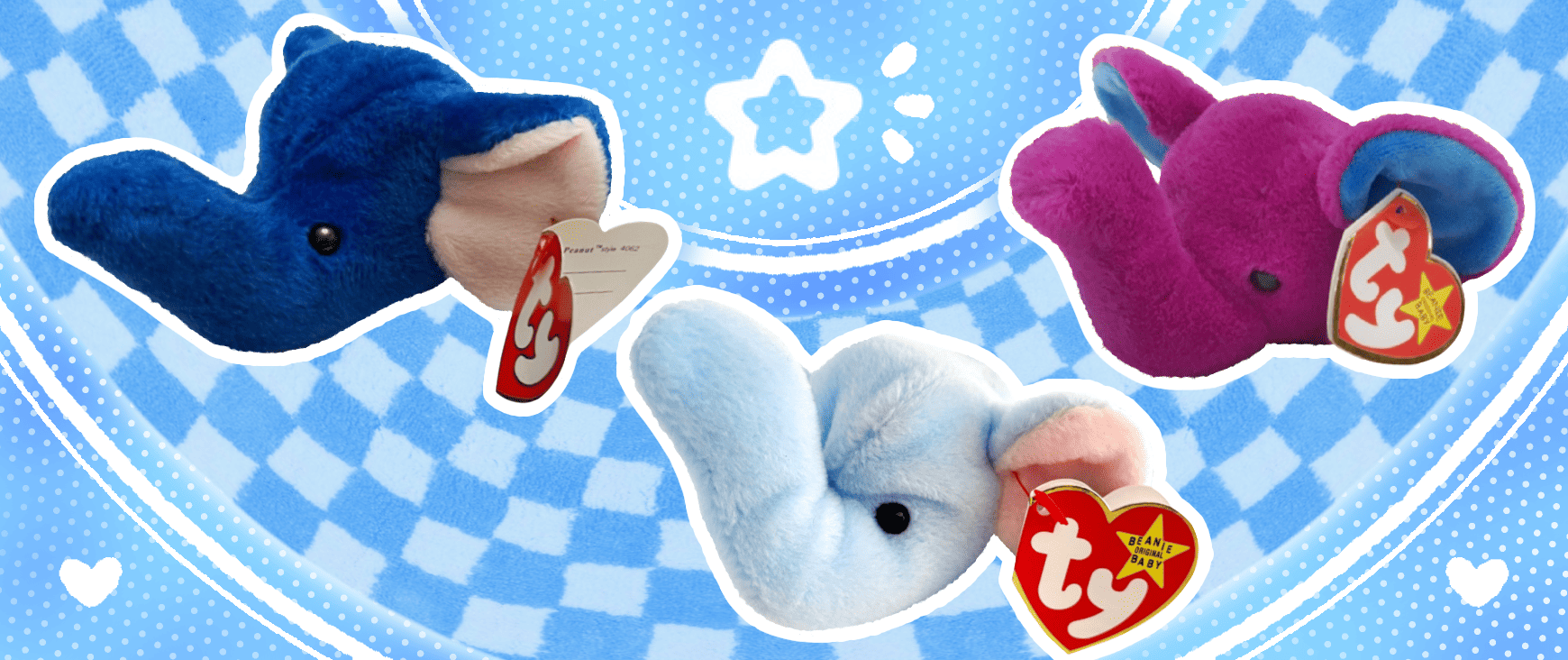
Peanut the Elephant has quite a few variants. As of 2025, there are a total of three versions of Peanut in circulation.
Here is a quick breakdown of each variant:
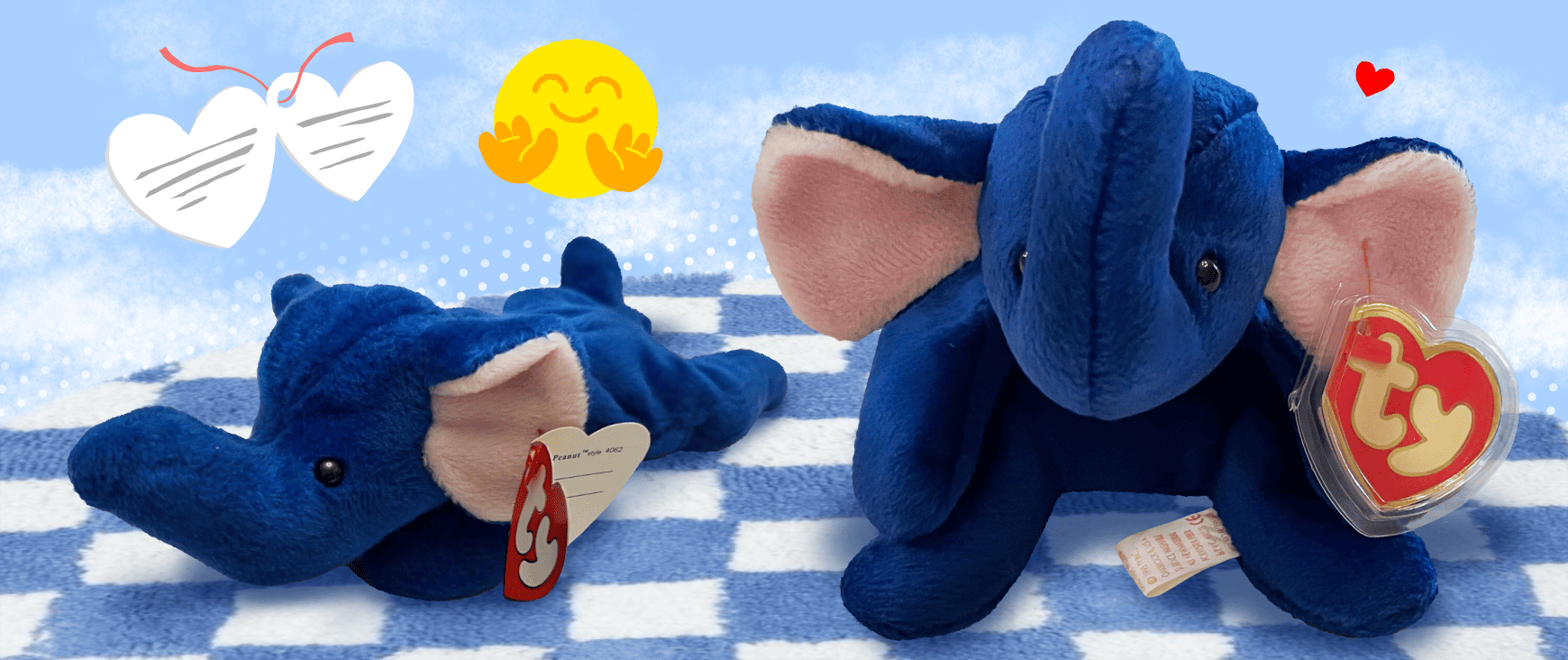
Royal Blue was the original version of the Peanut Beanie Baby, launched on 6/3/95, and quickly retired on 10/2/95. Its signature dark blue colorway has both earned some people a small fortune and caused others to spend considerable amounts of money. But then again, it’s difficult to put a price on that huggable body and adorable trunk!
Poem:
Peanut the elephant walks on tip-toes
Quietly sneaking wherever she goes
She’ll sneak up on you and a hug
You will get
Peanut is a friend you won’t soon forget!
Peanut’s poem reveals her to be a master of hug ambushes. Renowned as a sneaky, cuddly pachyderm, Peanut defies the true nature of an elephant to follow the ways of the ninja. We think she would probably get along just fine with the Kung Fu Panda!

Because of its extremely limited production numbers, the royal blue version is also one of the most highly sought-after. It was produced with PVC pellets and features a 3rd generation hang tag with a 1st generation tush tag.
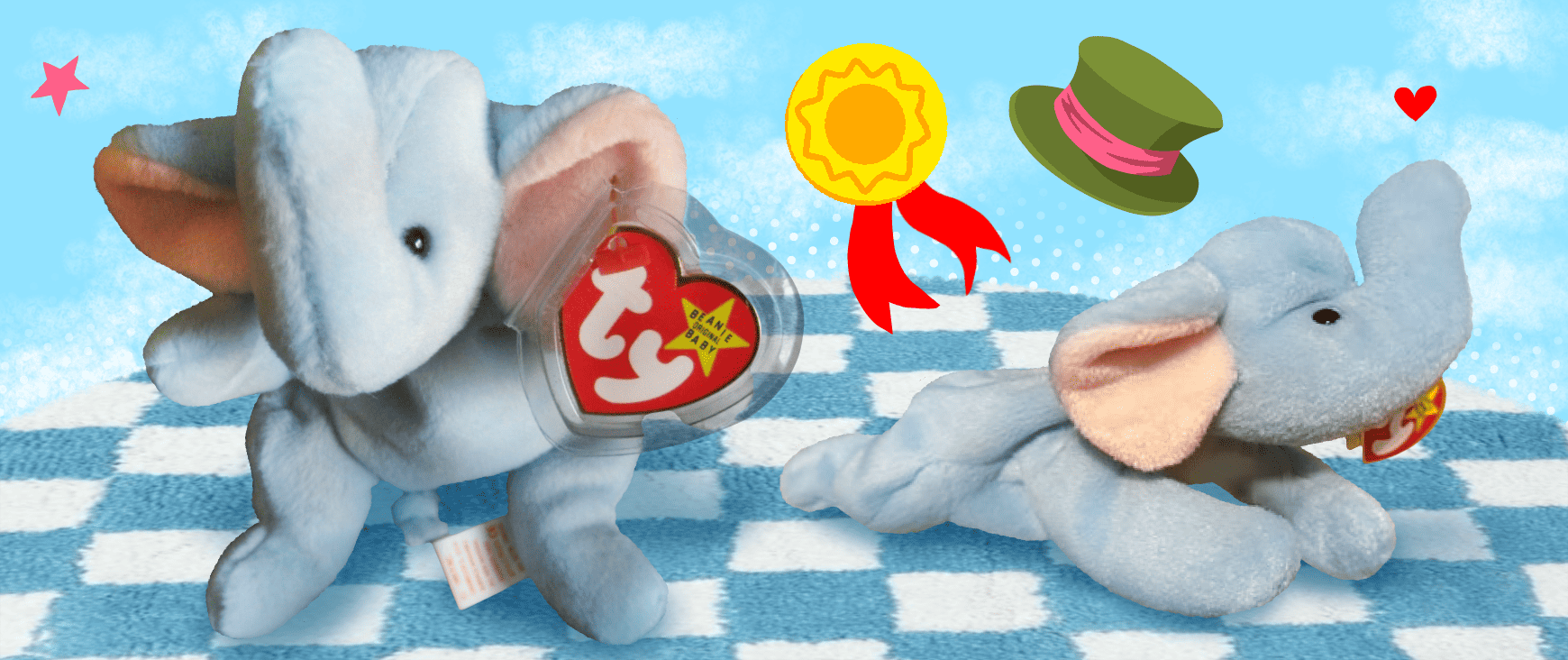
The Light Blue Peanut was the successor to the royal blue version. It was launched on 10/2/95, discontinued on 5/1/98, and featured a much lighter hue of blue on the body. It also had embroidered features along with the same light pink coloring for the inside of the ears.
It has the same poem as the original royal blue version.
This evolved Peanut has been featured in a handful of promotions. Most notably, Light Blue Peanut was made available at two separate MLB games (8/1/98 and 9/6/98) for the Oakland A’s, whose mascot also happens to be an elephant. How’s that for solidarity?
The Light Blue Peanut the Elephant also did a stint in the theater, with a version that was available as a promotion at Livent’s Broadway for Phantom of the Opera. That Peanut had a red ribbon and phantom pin affixed to it.
Because it was produced for several years, this Peanut can be found with 3rd, 4th, and 5th-gen hang tags, and tush tags from generations 1 through 6. It has also been produced with PVC and PE pellets.
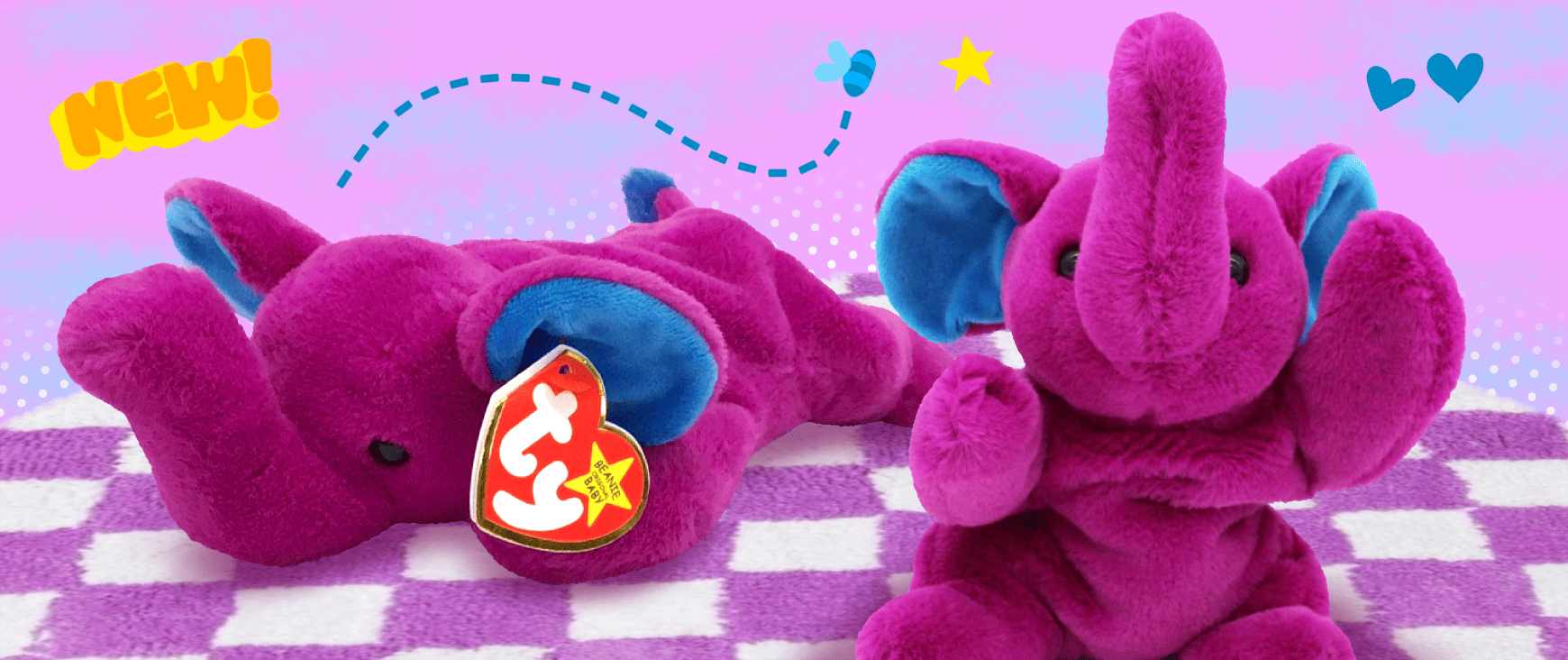
As part of the Beanie Babies 30th Anniversary, a re-release or “sequel” for Peanut the Elephant was created as an extremely limited edition. It was introduced on 6/1/23 and retired on 6/29/23. Peanut II’s main feature is its wildly different colorway, switching out the dark and light blues and pinks for a purple body and blue on the inner ear and tip of the tail.
Outwardly, this Peanut is the same as the other Beanie Babies, minus a color palette change. It’s still the perfect size for little hands, and even has the same poem as its predecessors.
However, it’s not completely the same. It has a 20th-gen hang tag and a 15th-gen tush tag, and was manufactured with plastic pellets only. It’s not worth too much right now by the looks of things, but it’s still fairly new. If you have one of these, it would be a good idea to keep it somewhere safe. It might be worth quite a bit in a few years!

Fact

Because the original Royal Blue Peanut only came with a 3rd generation Beanie Babies hang tag, it didn’t have a poem readily available. The poem wasn’t known until McDonald’s released a Teenie Beanie of Peanut, which had its poem and birthday printed on the package.
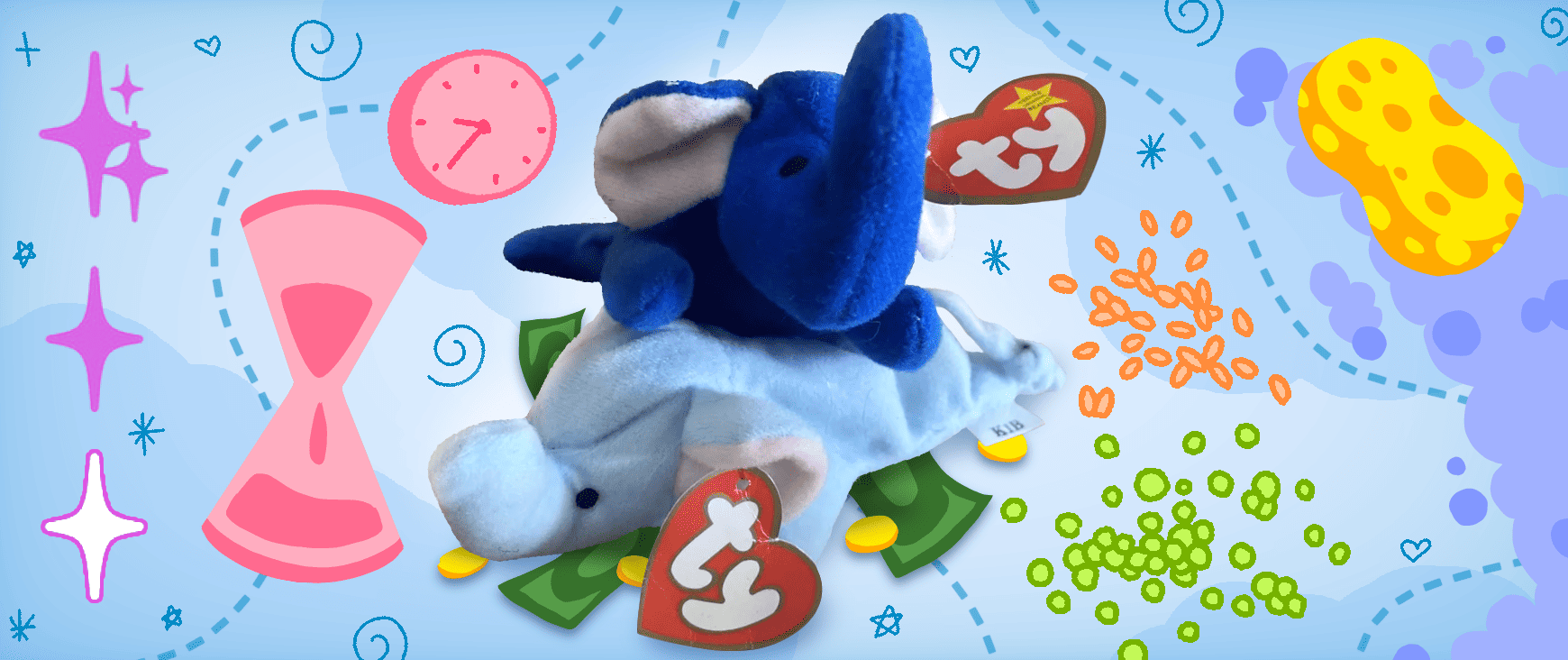
How much a Peanut the Elephant Beanie is worth is dependent on a few different factors:
Rarity – How long was the Beanie produced? Was it overproduced? Does everyone and their grandma have one sitting on a table somewhere? These are going to be the most important questions to ask when evaluating any Beanie in your collection.
Age – Separate from rarity, the age of a Beanie is going to be another important factor that determines value. Beanies from 25+ years ago are going to be worth more than those produced in the last 5 years. The value of Beanies goes up over time, just like fine wine.
Materials – Beanies have been produced with various materials since they first came on the scene. They’ve gone from PVC to PE, and now finally plastic pellets that make up their inner filling. The PVC and PE pellets of generations past are viewed as more valuable, so keep an eye out for that.
(You can tell what kind of filling a Beanie has by looking at its tush tag.)
Condition – Like most collectibles, the value of all Beanie Babies is going to primarily come down to how well they have been preserved. Beanies that are sun-bleached from sitting on the dashboard of a car for 10 years won’t go for as much as one that has been kept in a cool, dry trunk in someone’s attic.
Note: like our article covering the 25 Most Valuable Beanie Babies, the following section will utilize information from Sell2BBNovelties.com and recent eBay.com auctions.
Since Royal Blue Peanut had such a limited production run, a verified original would be worth the most of the bunch in 2025. However, it doesn’t seem to be reaching the insane $7,000 valuations it once enjoyed these days.
Mint Condition – $600
Creased Tag – $350
No Hang Tag – $200
The highest most recent sale for a legitimate Royal Blue Peanut was on February 20th, 2025, for $700. Going for one hundred dollars over Sell2BBNovelties’ asking price is one hell of a sale!
Other comparable recent sales were in the $500-$600 range, so Royal Blue seems to be having a good year so far.
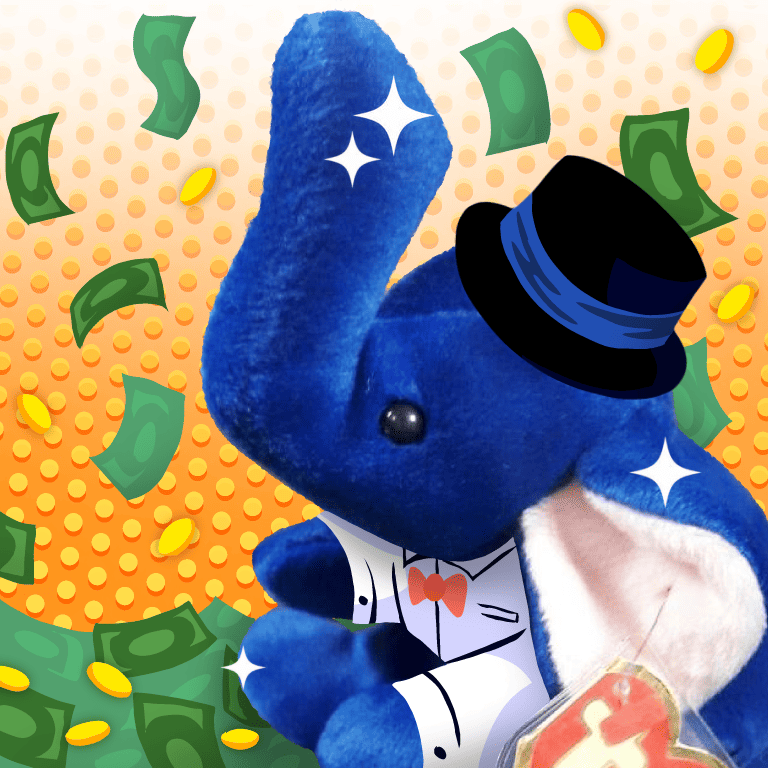
There’s a little more nuance for the Light Blue Peanut the Elephant due to the length of its production run and the variety of materials/tags it can possibly have, but let’s take a look at what it can add to your wallet.
Mint Condition – $0.50
…Ouch.
The Light Blue Peanut seems to be faring better on eBay, where one sold for $49.99 on February 14th, 2025. Other Light Blue Peanuts have sold from anywhere between $1 to $25.
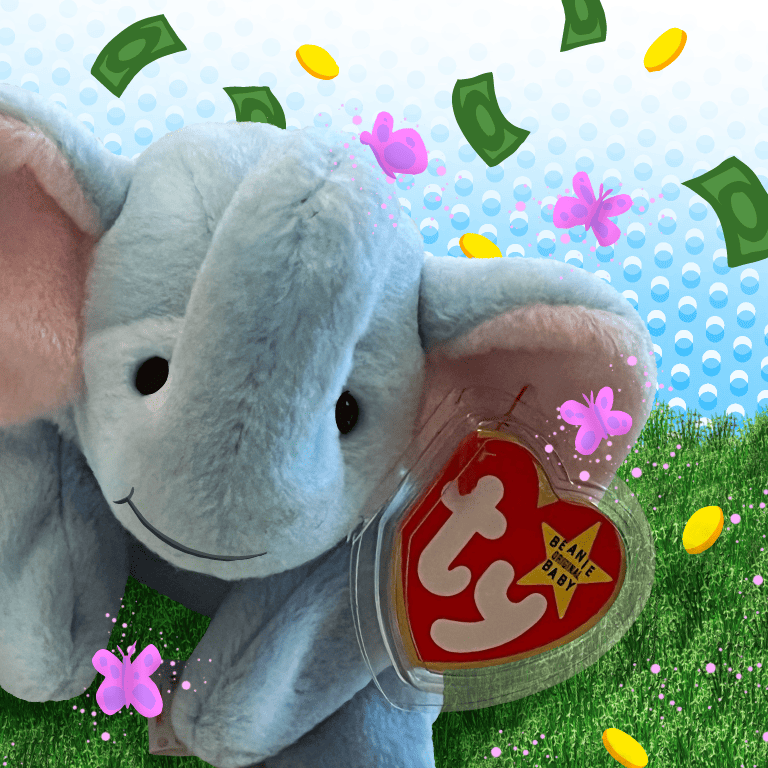
Being the newest one of the bunch and not even a year old as of this writing, Peanut II probably isn’t going to make your bank account grow in any noticeable way. But, let’s take a look at the facts anyway.
Mint Condition – $1.50
As of March 2025, Peanut II is registered on Sell2BBNovelties, but she’s certainly not lighting up the platform.
Over on eBay, a pretty good condition Peanut II sold for $17.43 on February 22nd, 2025, so she’s definitely faring better here. Other sales were completed for roughly $12 on average.
Peanut II’s current value is better this year than it was in previous editions of this guide, but we still recommend checking back again in 5-10 years. She’s got potential!
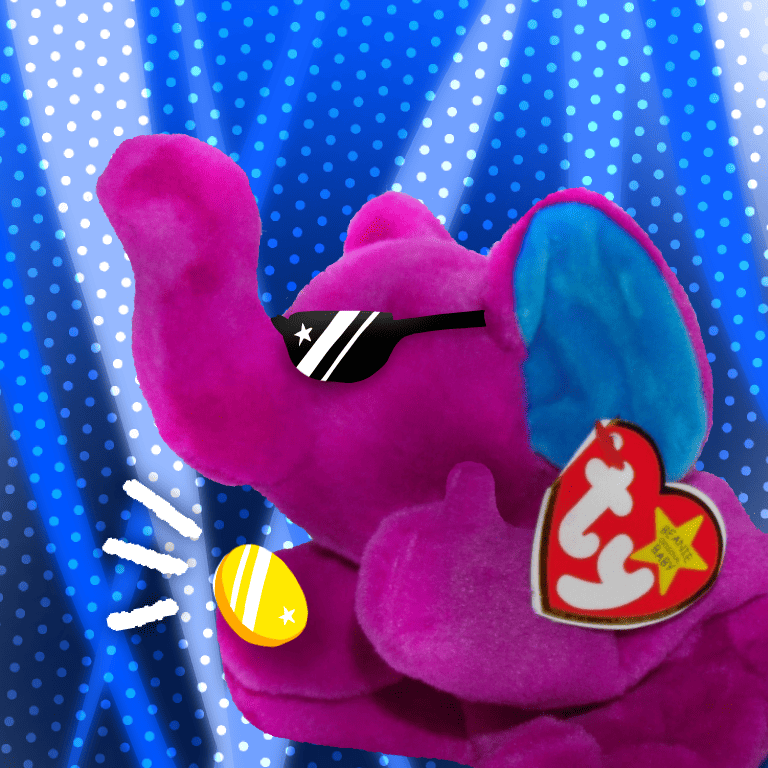
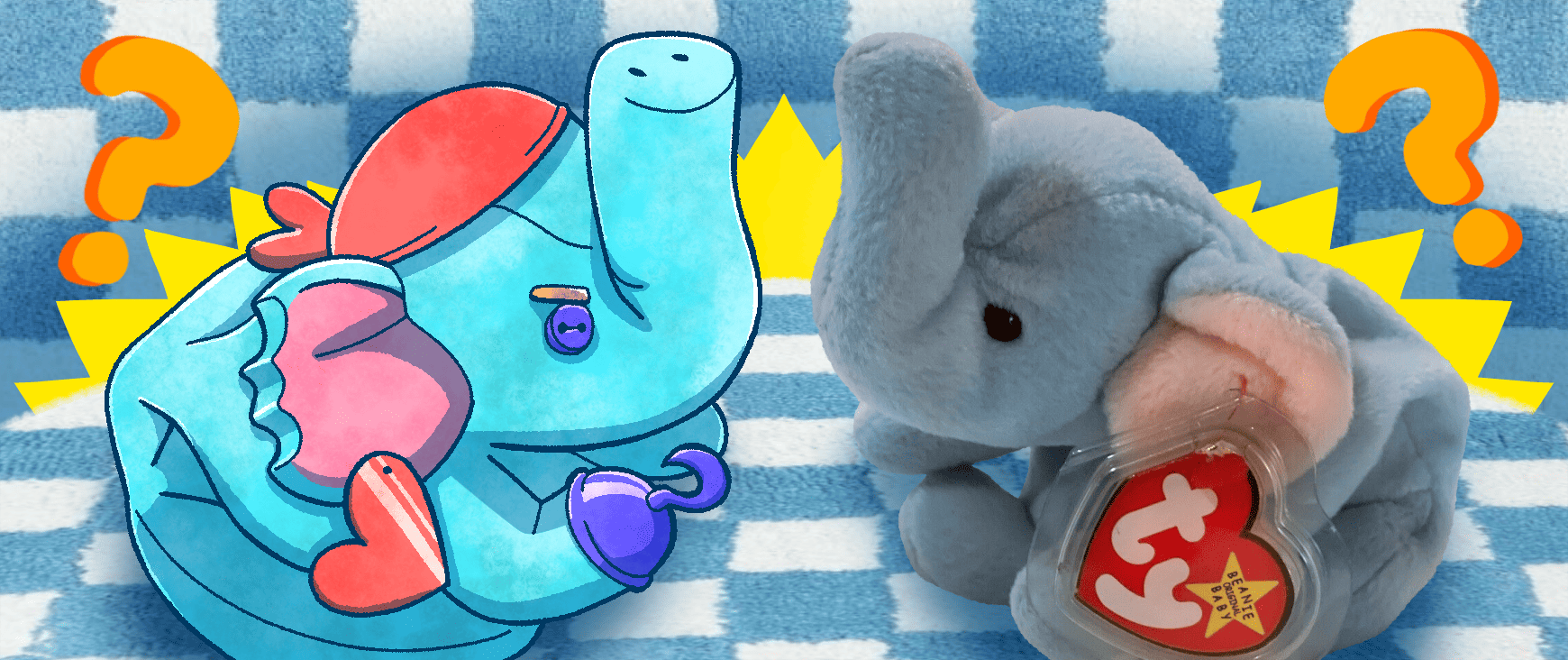
In order to evaluate your Peanut to know if it’s valuable or not, you can compare it to the factors described in the previous section. Just keep in mind that the overall condition of the plush is of the utmost importance to buyers, and will determine how much you can get for it.
Now, if you’re going to purchase or sell an “Original” Royal Blue Elephant, there are a handful of extra things you need to be aware of. This little thing was counterfeited rampantly throughout the 90s, and as such, there are tons of fakes floating around trying to fool you for big money. To combat this Peanut Prankery, we’ve put together a small Anti-Counterfeiting Guide that you can follow to protect your collections and your wallet.
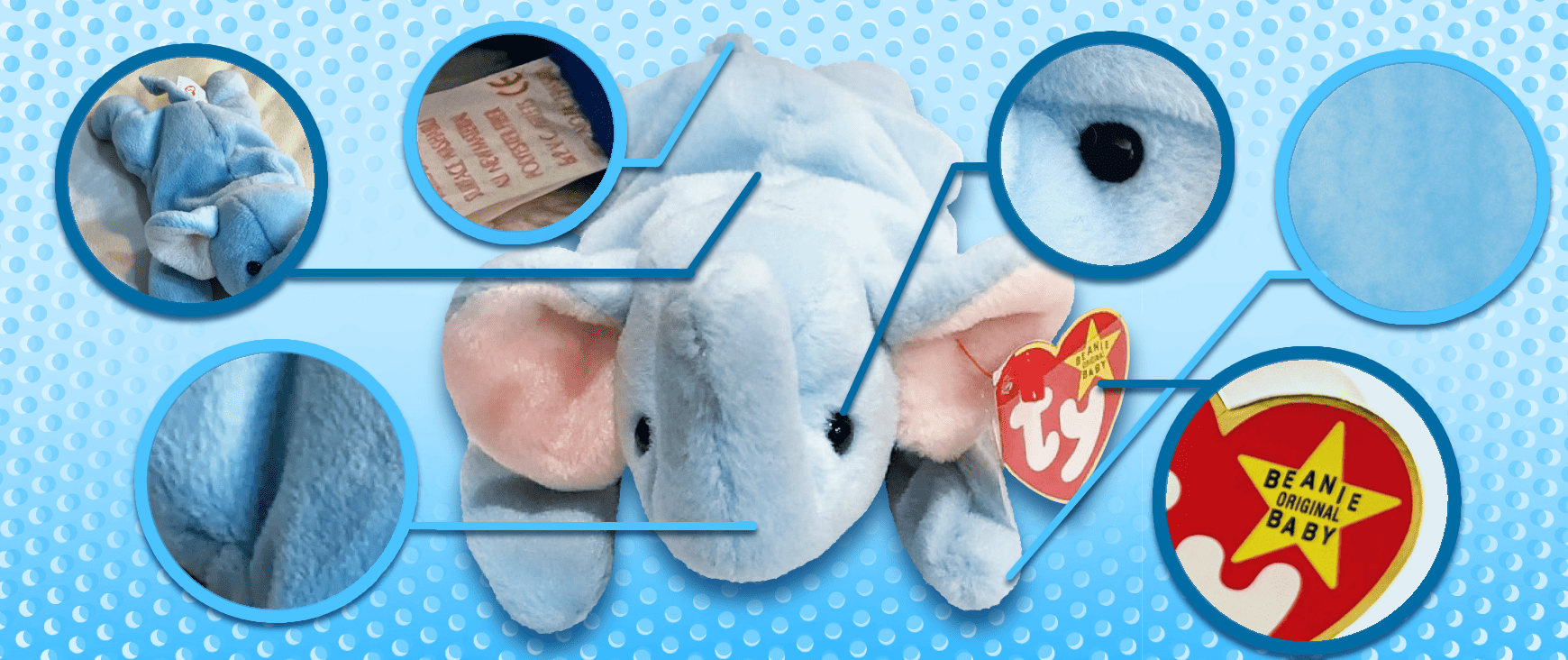
Texture – Real and fake Peanuts will look almost identical unless you get really close to them. The texture of a counterfeit is closer to flannel, while an original Beanie has a much softer texture with short fur. You can really feel the difference, but since most of these sales happen online, ask for some really good pictures.
Trunk – The trunk of a counterfeit Peanut will be much more curved than an authentic one, which is noticeably L-shaped. The soft curve might be more inviting, but that doesn’t mean it’s worth more!
Color – A fake Peanut’s Royal Blue color will be slightly lighter than the real thing, but this can be played down with poor lighting.
Eyes – The eyes of a real Peanut are slightly recessed into the face of the plush, while a fake’s eyes are slightly larger and protrude more.
Hang Tag – It’s a subtle difference, but the hang tag of a fake Peanut will have a thicker gold outline than an authentic one. The words printed on the inside of that tag will also be smaller than those on a real tag. Also, keep in mind that this version of Peanut only came with a 3rd gen hang tag, so anything different will be a dead giveaway.
Tush Tag – The print on the tush tags of a counterfeit Royal Blue Elephant will be thicker and bolder than the genuine article, which is always presented with a thinner type.
Thanks for checking out this Peanut the Elephant value guide! For more awesome Beanie Baby content, you can take a look at similar pages we’ve made for Princess the Bear, Millennium the Bear, and Peace the Bear.
And for even more Beanie Babies, collectibles, and all things 90s, you can follow Rediscover 90s Toys on Instagram, Pinterest, and all our other social media pages.
Mike is a video game enthusiast, a chronicler of the 90s, and a collector of many things. Born in the mid-90s, he was able to catch the wave of some of the best things the decade had to offer, like Power Rangers, Pokémon, Bagel Bites, the list goes on. Despite the amount of time that has passed, he still enjoys many of those things today! If he’s not writing or gaming, he’s probably wondering why Warriors of Virtue didn’t take off the same way Teenage Mutant Ninja Turtles did.

Check it out!

September 1, 2024
How ’90s Polly Pocket Became a Toy Sensation

March 27, 2025
How Much is Peace the Bear Worth? 2025 Value and History

March 4, 2025
Real Princess Diana Beanie Baby Value 2025